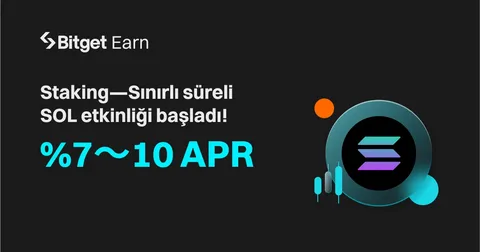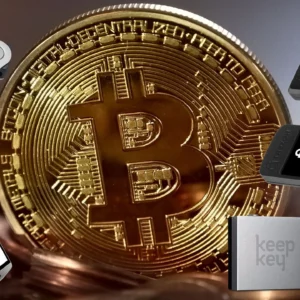Introduction
The cryptocurrency landscape is constantly evolving, with major players making strategic moves that shape the industry’s future. One such recent development is Cumberland DRW’s bold $5.72 million investment in staking Solana (SOL). This decision has sparked intense discussions among crypto enthusiasts, investors, and analysts alike. Does this signal a shift in institutional confidence toward Solana? Could this move impact the broader cryptocurrency landscape?
Staking has become a crucial element of the crypto ecosystem, enabling participants to secure networks and earn passive income. Cumberland DRW’s investment in SOL staking underscores the growing institutional adoption of blockchain networks beyond Bitcoin and Ethereum.
This blog post explores the significance of this move, its potential impact, and what it could mean for the future of the cryptocurrency landscape.

Institutional Adoption of Solana: A New Era?
Cumberland DRW’s Strategic Move
Cumberland DRW, a proprietary trading firm known for its deep involvement in digital assets, has been making waves in the crypto industry. With its recent $5.72 million allocation to Solana staking, the firm is demonstrating strong confidence in the network’s long-term viability. This move highlights an emerging trend where institutional investors are venturing beyond traditional blue-chip cryptos like Bitcoin and Ethereum to explore high-performance blockchains like Solana.
Solana’s appeal lies in its high transaction speed, low fees, and scalability. Unlike Ethereum’s proof-of-stake mechanism, which has faced congestion and high gas fees, Solana offers an efficient alternative. By staking SOL, Cumberland DRW is not only earning rewards but also strengthening the network’s security and decentralization.
Why Solana Over Other Blockchains?
Cumberland DRW’s decision to stake in Solana raises the question: why Solana over other blockchain networks? The answer lies in several key factors:
- Performance & Scalability: Solana processes over 65,000 transactions per second, making it one of the fastest blockchains.
- Lower Transaction Costs: Compared to Ethereum’s high gas fees, Solana’s low-cost transactions are attractive to both retail and institutional investors.
- Resilience & Growth: Despite past network outages, Solana has rebounded with enhanced infrastructure and growing developer activity.
By choosing to stake in Solana, Cumberland DRW’s move signals increasing institutional confidence in the blockchain, further reinforcing its place in the evolving cryptocurrency landscape.
The Impact of Cumberland DRW’s Staking on Solana and Crypto Markets
Strengthening Solana’s Network Security
Staking plays a crucial role in securing proof-of-stake (PoS) networks. When institutions like Cumberland DRW stake large amounts of SOL, they help improve the blockchain’s resilience against attacks and ensure smooth network operations. This, in turn, builds trust and encourages more investors to participate in the network.
Institutional staking also adds credibility to Solana’s consensus mechanism, proving that the network is robust enough for large-scale investment. Given the competitive cryptocurrency landscape, where multiple PoS blockchains are vying for dominance, Cumberland DRW’s investment gives Solana an edge.
Institutional Influence on the Crypto Market
Institutional movements significantly impact market sentiment. Cumberland DRW’s decision to stake in Solana sends a bullish signal to investors, potentially driving SOL’s price upward. History has shown that when major firms endorse a cryptocurrency, retail investors often follow suit.
Moreover, institutional staking could set a precedent for other trading firms and investment funds to consider similar strategies. This could lead to increased liquidity in the staking ecosystem, benefiting both Solana and the broader cryptocurrency landscape.
Risks and Challenges of Institutional SOL Staking
Market Volatility and Regulatory Concerns
Despite the optimism surrounding Cumberland DRW’s investment, there are risks involved. Solana, like all cryptocurrencies, is subject to extreme volatility. While staking provides a passive income stream, it does not protect against price fluctuations. If SOL’s price declines, the value of staked assets could decrease, affecting returns.
Additionally, regulatory uncertainty remains a concern. Governments and financial regulators are increasingly scrutinizing crypto staking, with some jurisdictions imposing restrictions. If new regulations impact staking operations, Cumberland DRW’s investment could face unexpected challenges.
Solana’s Technical Stability
Solana has experienced multiple network outages in the past, raising concerns about its long-term reliability. If technical issues persist, it could undermine investor confidence, potentially impacting staking rewards and network participation.
That said, Solana’s development team is continuously working on improving network stability. If these efforts succeed, Cumberland DRW’s investment could prove to be a wise long-term strategy, further reinforcing Solana’s role in the evolving cryptocurrency landscape.
The Future of Institutional Staking in Crypto
Will More Firms Follow Cumberland DRW’s Lead?
Cumberland DRW’s SOL staking could be a harbinger of broader institutional adoption of staking as a passive income strategy. If other financial firms and trading desks recognize the profitability and security of staking, they may allocate significant funds to similar ventures.
This trend could lead to increased competition among blockchains offering staking rewards, pushing networks to enhance their performance and incentives. Ultimately, institutional participation could solidify staking as a mainstream financial practice, influencing the future direction of the cryptocurrency landscape.
The Evolution of Staking in a Decentralized Economy
The rise of institutional staking brings both opportunities and challenges to the decentralized ethos of crypto. While institutional involvement adds credibility and security, it could also lead to centralization concerns if a few large entities control a significant portion of staked assets.
To mitigate this risk, blockchain projects may need to develop mechanisms ensuring fair staking distribution. Balancing institutional participation with decentralization will be key to maintaining the integrity of the cryptocurrency landscape.
Conclusion
Cumberland DRW’s $5.72 million investment in Solana staking is a significant development that could shape the future of institutional involvement in crypto. By choosing Solana, the firm is signaling confidence in the network’s potential, further validating its role in the evolving cryptocurrency landscape.
While risks like market volatility and regulatory uncertainty remain, the broader impact of institutional staking cannot be ignored. If other firms follow suit, we may see a new era where staking becomes a mainstream financial strategy, enhancing both security and adoption in the crypto industry.
What are your thoughts on Cumberland DRW’s move? Do you think institutional staking will benefit or hinder decentralization? Leave a comment below and join the discussion!







This Post Has One Comment